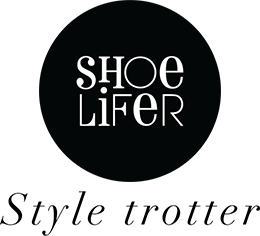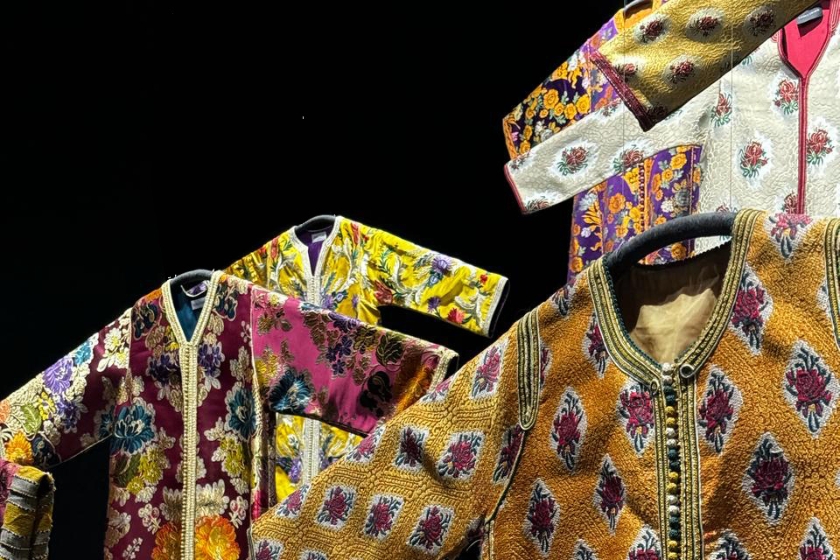The Moroccan caftan is the result of a millennium-old l saga. To discover a history as rich as it is fascinating, the exhibition “Au fil du caftan: heritage & craftsmanship” is THE cultural outing to do with your eyes peeled. The editorial team reveals all!
In 2023, Morocco submitted a request for the induction of the Moroccan caftan onto the UNESCO World Heritage List. While awaiting review of the application, which will take place in 2025, the Moroccan caftan is on display in Casablanca. From April 3 to 12, DS Automobiles presents the unprecedented and immersive exhibition “Au fil du caftan: heritage & craftsmanship,” at the DS Gallery. Why would a French luxury automobile manufacturer be interested in the Moroccan caftan? Simply because DS Automobiles excels in syncretism, combining advanced technology with ancestral craftsmanship. In addition, it has also been the official partner of Paris Fashion Week since 2019. So, at a time when the Moroccan caftan, the result of a millennia-old history and heritage, is exported worldwide, this merger makes perfect sense.
Furthermore, the artistic direction and curation of this exhibition were conceived and designed by Sofia Benbrahim, founder of the digital agency Serafina Concept and publisher of Shoelifer — and the whole team of your favorite lifestyle magazine worked day and night to prepare for this event! As a reminder, Sofia Benbrahim is no stranger to this kind of endeavor. From 2015 to 2019, she was entrusted with curating the exhibition of traditional Moroccan couture at the Moroccan Week in Abu Dhabi over 4 successive editions. So, you can see why it’s really worth taking a look at the DS Gallery.
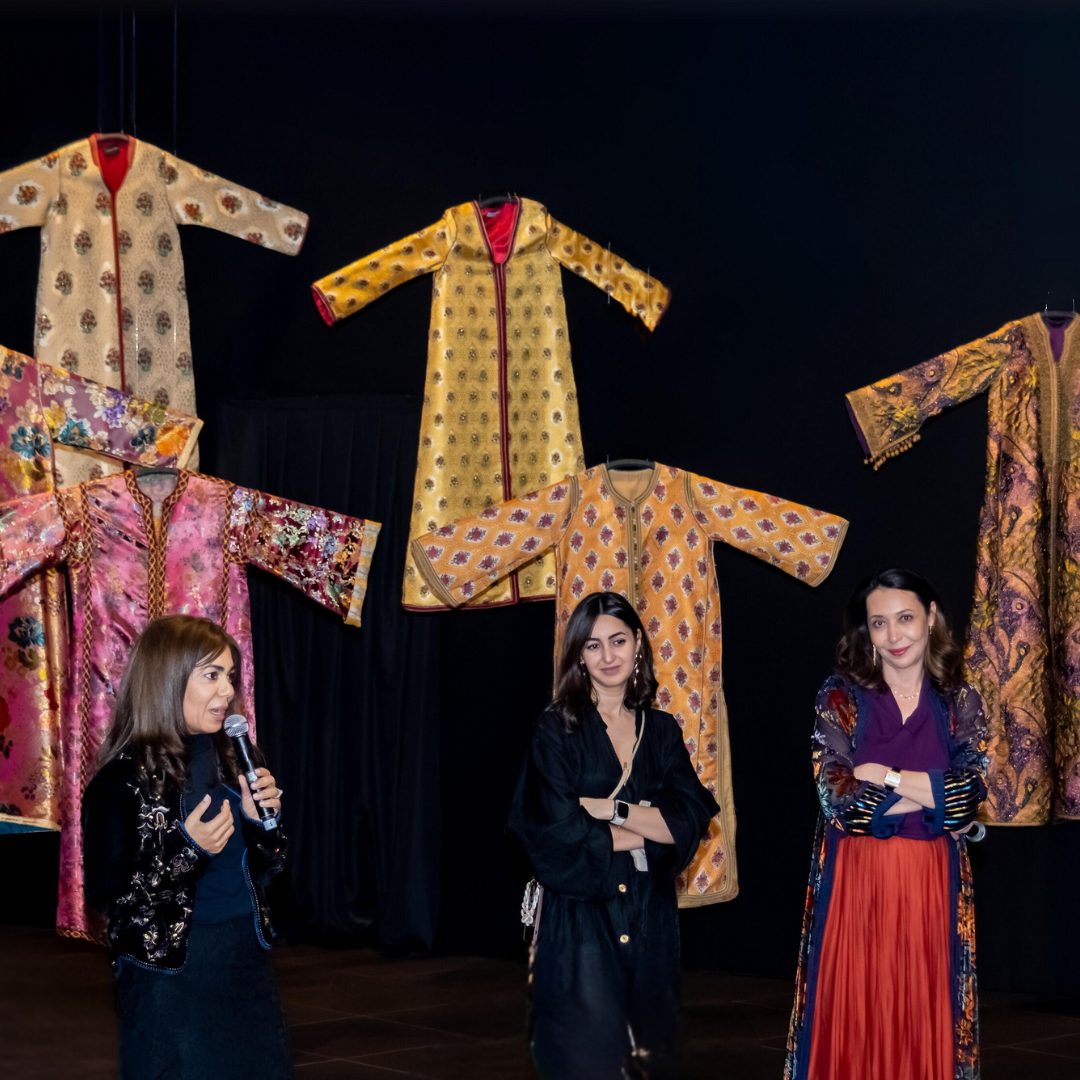
An exhibition bursting with color
If we can’t convince you on an emotional level, what about on a more substantial one? The exhibition “Au fil du caftan: heritage & craftsmanship” is objectively a must-visit if you want to become an expert on the Moroccan caftan which, is (do we really need to remind you?) an essential piece of the female wardrobe in the kingdom. The educational and colorful exhibition brings together for the first time private collections of ancient, vintage, and modern Moroccan caftans, as well as current collections designed by our greatest Moroccan designers.
You will discover pieces by Tamy Tazi, Zhor Sebti for Fadéla Couture, Zbida Alami, Amina Benmoussa, Zineb Joundy, Lamia Lakhsassi, Frédérique Birkemeyer, Albert Oiknine, Houda Serbouti, Myriam Bouafi, Zineb Lyoubi Idrissi, Loubna Guessous, Amina Tmimi, Salima Chaieb, and Sara Chraïbi. So, it is a true immersion into the universe of a transgenerational garment, often passed down from mothers to daughters, which brings people together and strengthens their bonds.
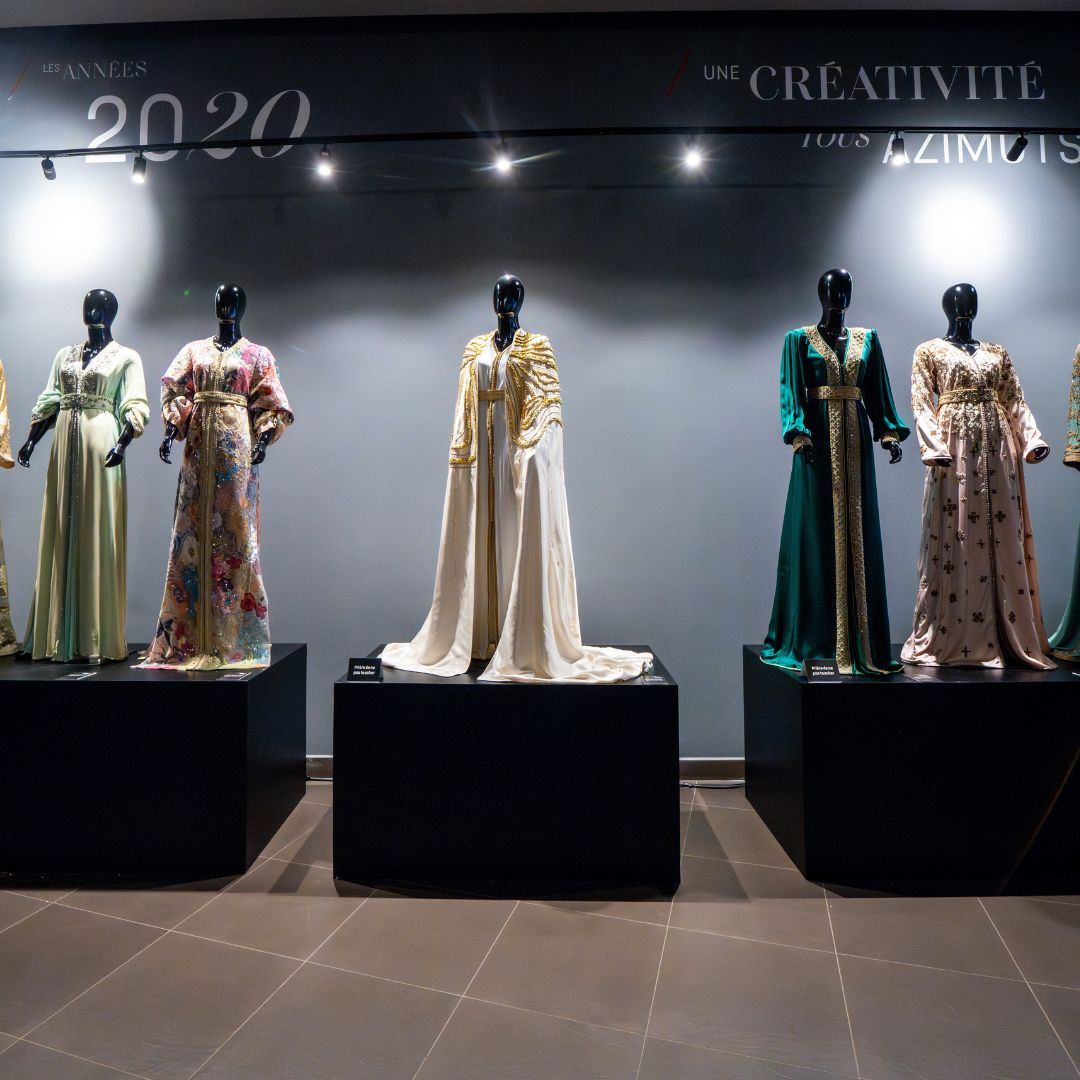
Read also : WEDDING CAFTAN : LET’S REVIEW THE BASICS !
The story of a millennium-old saga
Throughout the exhibition, the millennium-old saga of the caftan unfolds. First of all, its origins are still subject to historical debates. The caftan is “inherited from the splendors of the Ottoman Empire for some, a reinterpretation of the flowing robes of the Roman era, or reminiscent of the traditional haik for others.” Above all, it was once a garment of choice for men, a symbol of grandeur reserved for nobility. “From Baghdad to Cordoba, from Damascus to Istanbul, the caftan has been enriched , over time, by various influences to become the sartorial icon of the kingdom in the 11th and 12th centuries. But it was only 200 years later that it would make a remarkable entrance into women’s wardrobes to never leave again,” state the explanatory texts written for the exhibition.
In the 19th century, with the economic boom in Morocco, “the caftan flirted for the first time with Lyon brocades and silks imported from China.” The Moroccan caftan then became the preferred medium for ntaâ embroideries in gold thread from Fes, multicolored floral motifs from Tetouan, or geometric designs in silk thread from Rabat — alll achieved through the extraordinary behind-the-scenes work of the maâlems. From the 1950s to the 1970s, Western women’s liberation gradually reshaped the shape and style of the Moroccan caftan. The T-cut gradually gave way to a multitude of variations: trains, kimono sleeves, and flared shapes — evolutions brilliantly embodied by the iconic creations of Zhor Sebti for Fadila Couture, Zina Guessous, and Tamy Tazi.
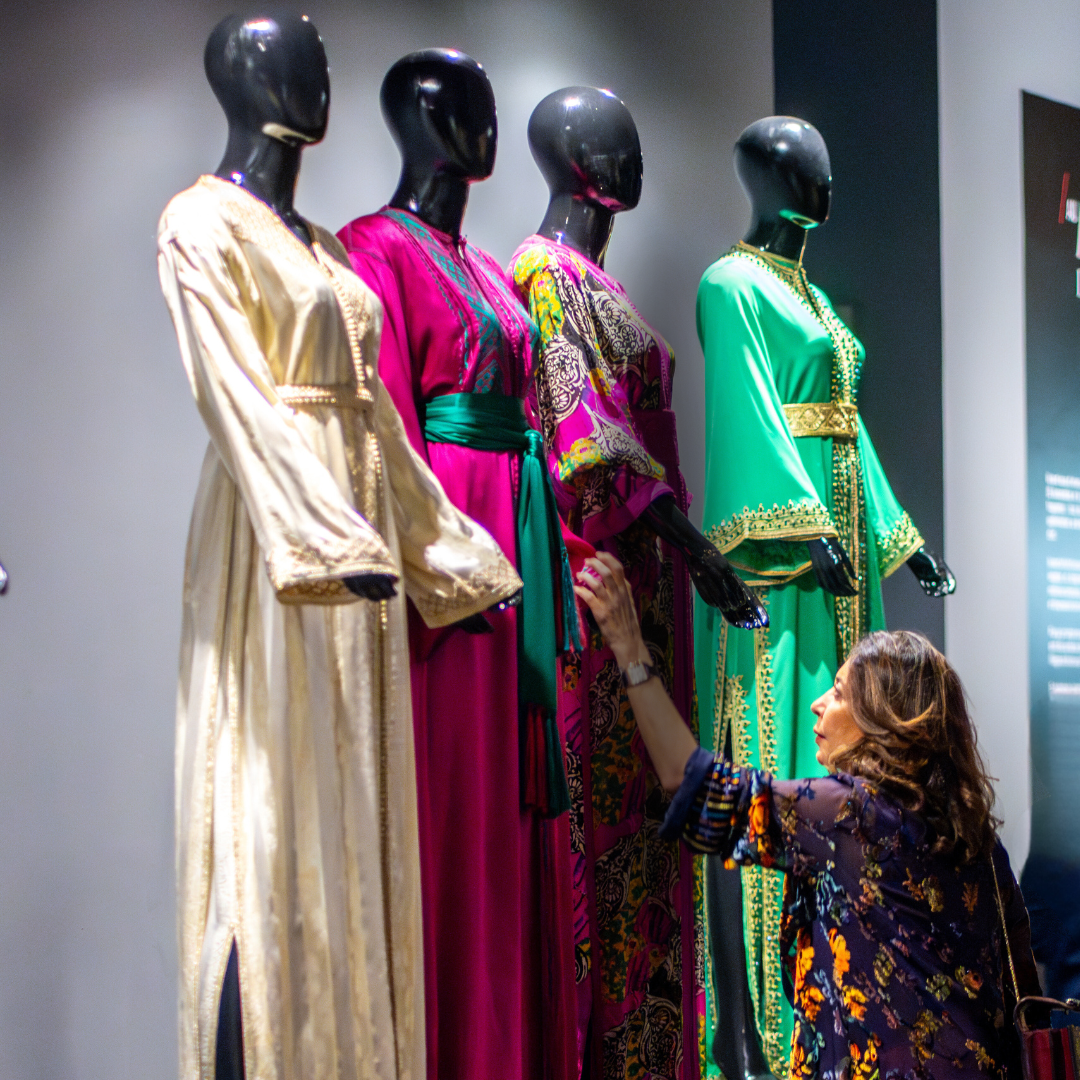
The more things change the more they stay the same MOROCCAN CAFTAN
With the exhilarating 1980s , the Moroccan caftan adopted tailored waists, shoulder pads, and new fabrics like guipure (lace). It was even worn over sheath dresses and other silk jerseys. In the 1990s, the rise of Moroccan fashion and the broadcasting of fashion shows on television contributed to the emergence of new designers with boundless imagination. This led to an era of uninhibited Moroccan caftans (layering of skirts, extra-wide belts, corsets, etc.) in the 2000s. This then led to the refined sleeves and an even more pronounced waist, all enhanced with sequins, beads, or sun pleats in the 2010s.
Despite this fascinating evolution, the Moroccan caftan never denies its traditional fundamentals (T-cut, buttons, and cinched waist) — a sign of true kinship and continuity. For instance, when gathering collections for this exhibition, three designers each brought a caftan in carmine red velvet. One dated from the early 20th century, another from the 1920s, and the last from the present era.
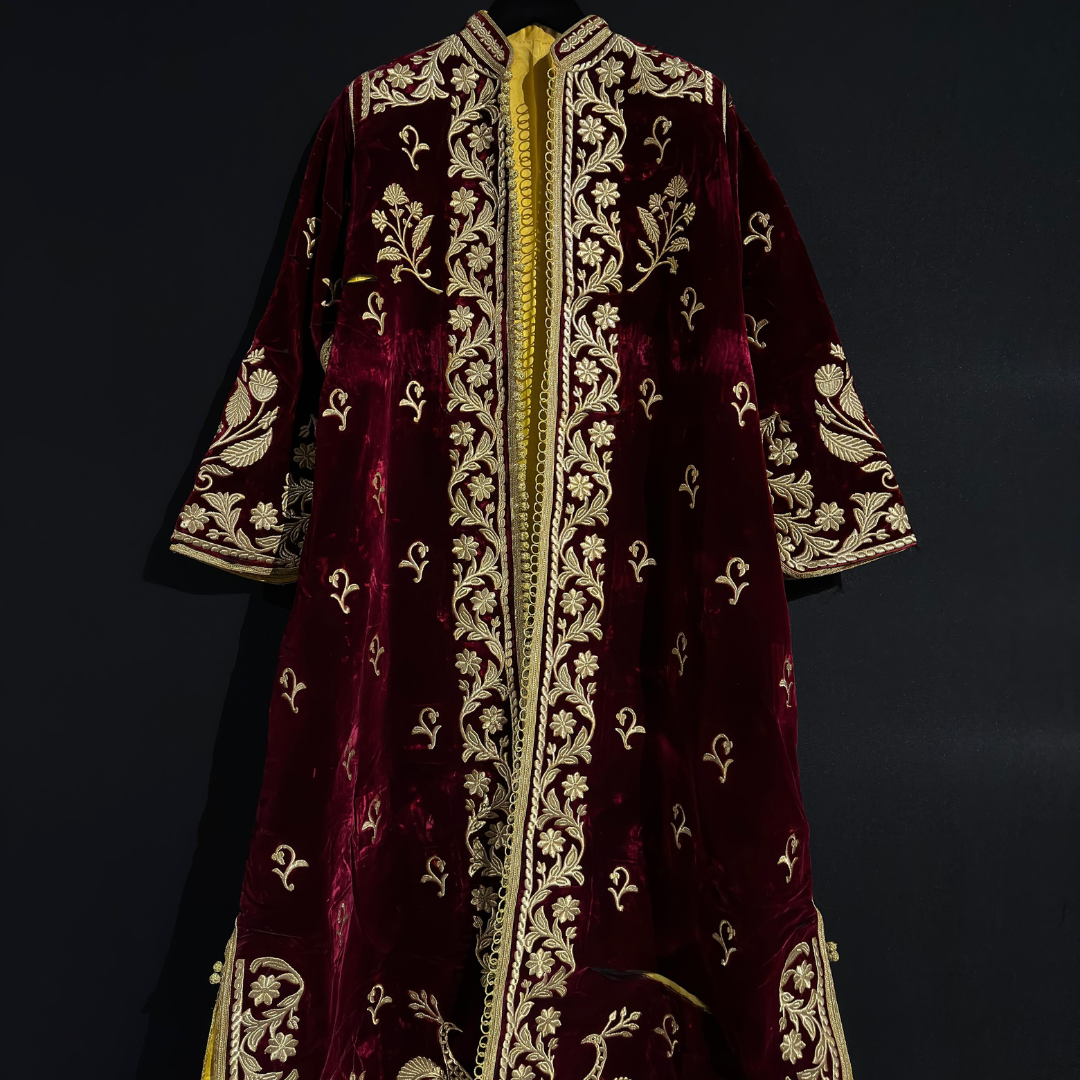
Ending With a Joyful Suspension and Concise Overview MOROCCAN CAFTAN
The highlight of the exhibition is none other than the suspension of caftans, a discursive visual artwork where ancient and contemporary ultra-colorful caftans come together. . The suspension is conceived as a celebration, a joyful and timeless festivity, where creative and experimental innovation meets heritage and unity. We have to admit, it’s quite moving!
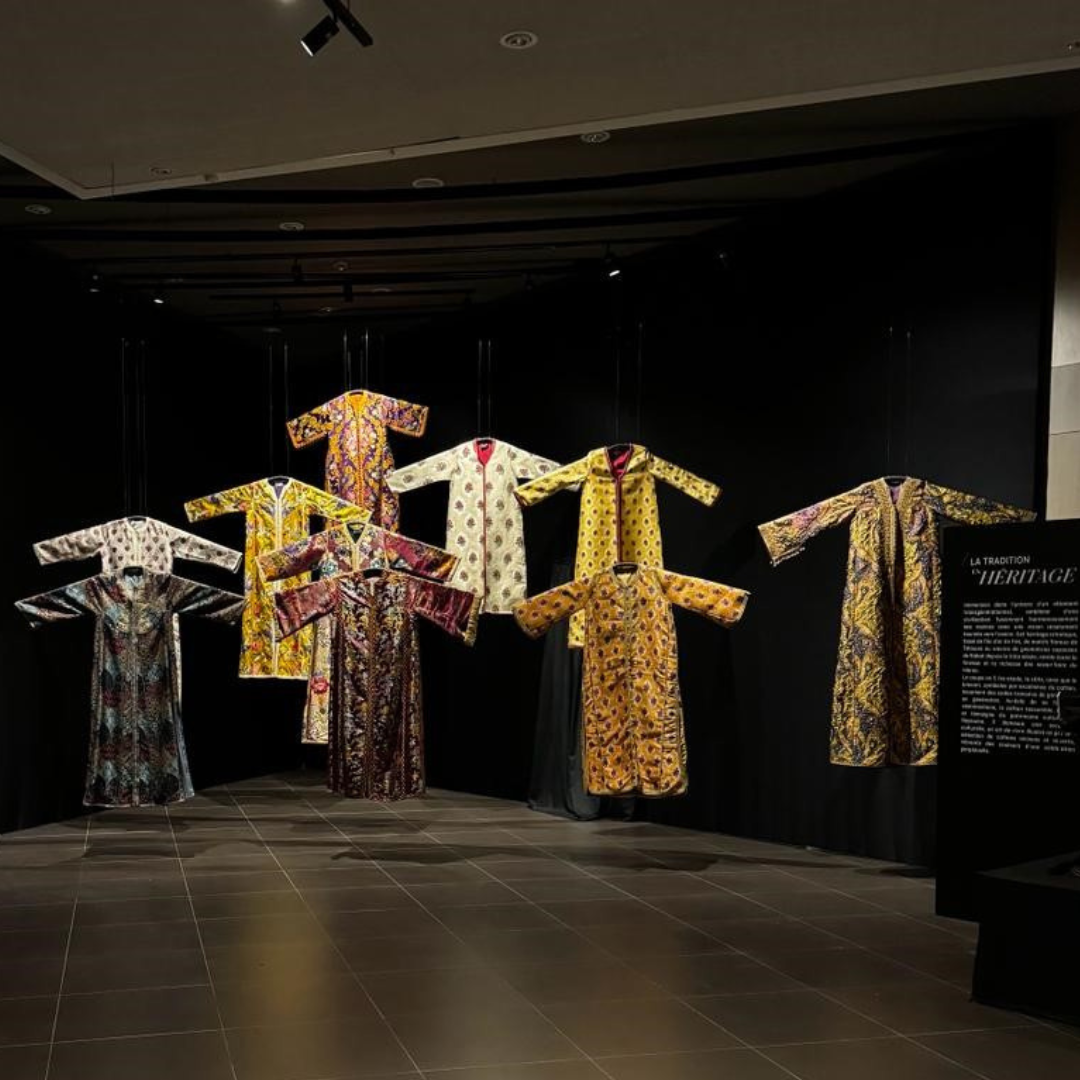
Instructive and inclusive, the exhibition also showcases the process of designing the Moroccan caftan. “From an inspiration board to the first pencil stroke, from a pattern to embroidery tests, the designer refines and communicates his creative vision. Supported by his cutters, tailors, pattern makers, embroiderers, maâlems, workshop managers… it’s a whole invisible world, a true driving force, that is active behind the scenes of the caftan.” The author of these lines (who, as you know, loves to flaunt her knowledge in public) particularly enjoyed “Le petit précis de la couture traditionnelle marocaine” (A Brief Overview of Traditional Moroccan Couture) also presented within the exhibition. Her favorite word? Karmoussa, which refers to the XL akad in braided silk thread, named so because of its resemblance to a fig. In short, as you can see, this exhibition on the Moroccan caftan is a must-see — and as soon as possible!
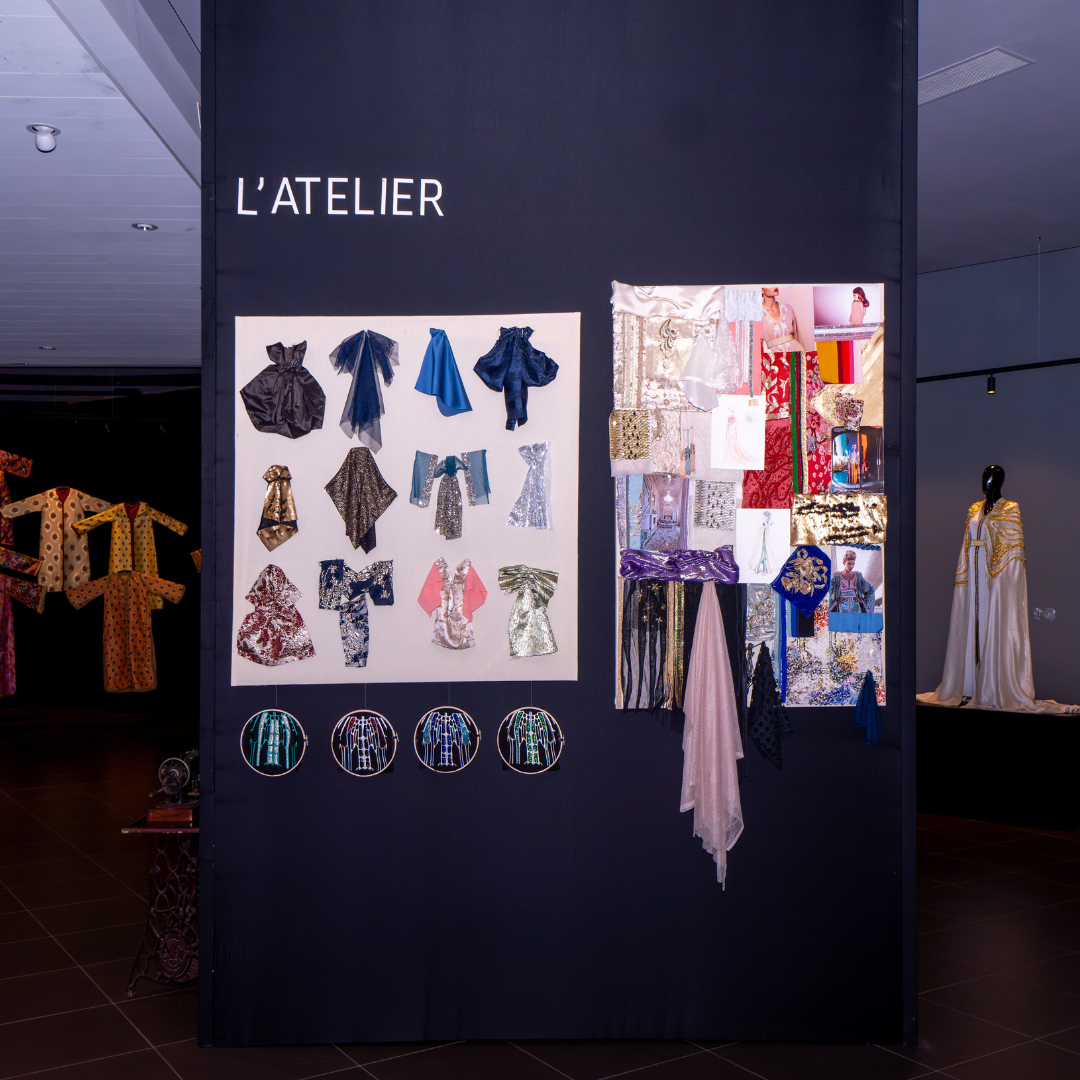
“AU FIL DU CAFTAN – HERITAGE & CRAFTSMANSHIP”
From April 3rd to 12th, 2024, at the DS Gallery, located at the DS Store Al Massira Al Khadra, Casablanca.
Open to the general public from 9 a.m. to 5 p.m. and from 8:30 p.m. to 10:30 p.m.
